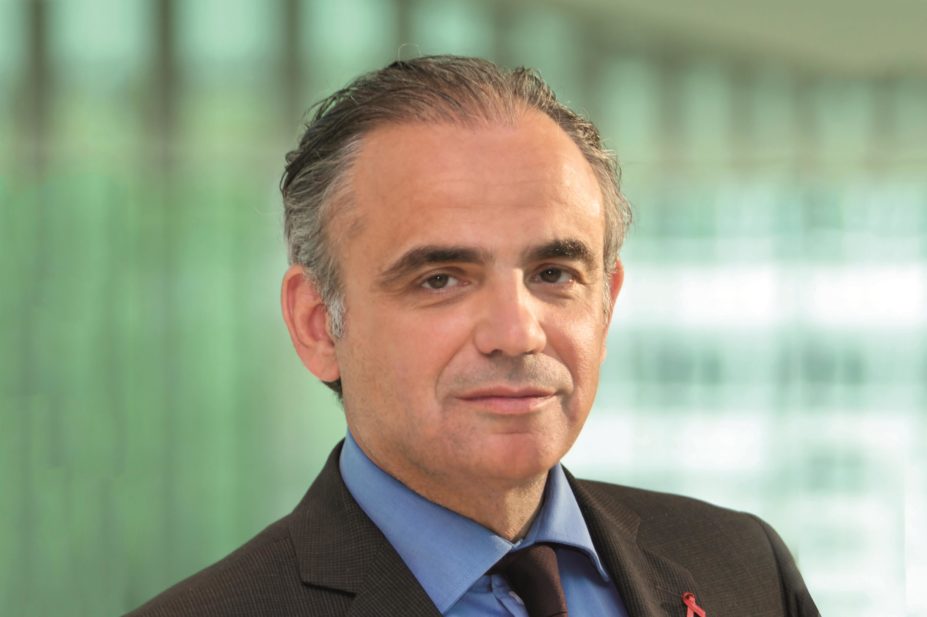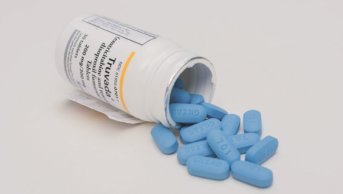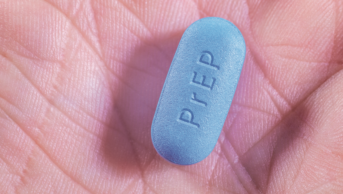
UNAIDS
Luiz Loures is deputy executive director of programme at the Joint United Nations Programme on HIV/AIDS (UNAIDS), where he leads the agency’s efforts in leveraging critical support to countries to reach the end of the AIDS epidemic by 2030 — one of the UN’s sustainable development goals.
Before joining UNAIDS in 1996, Loures, a Brazilian medical doctor with over 30 years’ experience in AIDS research, participated in the creation and consolidation of Brazil’s National AIDS programme — widely recognised today as being one of the most effective in curbing the epidemic. He was directly responsible for designing the programme for universal access to antiretroviral (ARV) therapy for people living with HIV in Brazil. In the early 1980s, Loures diagnosed some of the first patients with AIDS-related illnesses in Brazil.
What was the main objective of the two-day world leader’s summit on ending AIDS at the UN headquarters on 8–10 June 2016 in New York?
We expect a set of new commitments to take us from where we are today on AIDS. But that requires new commitments for this to happen, and we look to the UN general assembly to agree to a new set of ambitious commitments in this direction.
Would that include a new commitment on funding?
We estimate the world spends on average US$22bn on AIDS
Absolutely. We estimate that we need US$26bn per year by 2020, which is not an impossible figure considering that UNAIDS estimates that the world spends on average US$22bn on AIDS.
Data published in May 2016 from UNAIDS show that an extra 2 million people living with HIV were put on ARV treatment in 2015, bringing the total to 17 million worldwide accessing life-saving medicines. But that still leaves 22 million in need of ARVs. Can it be expedited?
With the speed that we are doing things currently, I don’t think it’s going to happen. But with 17 million people on treatment — 2 million more than the commitment the UN general assembly made in 2011 to have 15 million on treatment by 2015 — it is still wonderful news. But of course we need to do much more. To increase the number of people being treated, we need to reach the people most in need of treatment today who are not being tested and who do not have access to treatment. We also need to move the system into communities. We need much stronger engagement with community organisations, and people working on the front line to do simple things, like reaching people for testing and keeping people on treatment. This, to me, is most important if you want to move people onto therapy.
UNAIDS estimates that 6,000 people are becoming infected each day with HIV, which is 1.9 million annually. Your research shows that only 36% of males aged between 15 and 24 years and 28% of women in the same age group living in low and middle-income countries know enough about HIV. How do we address this knowledge gap?
Part of the solution is going back to the science – we need much more speed and much more engagement
We need to deal with the discrimination and stigma of HIV because this is what is slowing us down. We are advancing in terms of new drugs, more effective monitoring and point-of-care diagnostics, but in terms of prevention, I continue to see the same epidemic and the same challenges that I saw in the 1980s. We are reducing AIDS-related deaths, we are treating more people, but at the same time we are seeing an increase in new infections or stabilisation. For some populations, like gay men, we are even seeing a rebound in deaths. This paradox needs to be fixed. Part of the solution is going back to the science – we need much more speed and much more engagement and we need to speak at social science events and make it clear what works and what doesn’t in terms of prevention strategies.
On access to affordable drugs, there seems to be a major impediment for Sub-Saharan African countries, which carry the highest HIV disease burden in the world, with nearly 26 million of the world’s 36.9 million infected people living in the region. What can be done to attract more support from the international community to make drugs affordable and how can we make second-line ARVs more affordable?
Africa is not the problem anymore – Africa has the solutions. Sub-Saharan Africa is treating more people than any other region in the world. For example, South Africa has 3.4 million people under treatment, and plans to increase to over 5 million. They are going in the right direction, but they do need the support and commitments of the international community and part of this is to make drugs affordable. International dialogue needs also to focus on this. For instance, from a price point of view, South Africa spends the lowest price globally on first-line ARVs. Access to affordable second-line ARVs is a real problem because, as you put more people on treatment, you should expect that your needs for second-line treatments will also increase. So the issue of pricing is gradually becoming more an issue that needs to be tackled.
Brazil and India have emerged as major generic producers of ARVs and other drugs, but policy makers say that there should be more generic production in Sub-Saharan African countries, too. What are your thoughts on this?
Local production and accessibility are important factors to making more drugs available at a lower price. But we need to be careful in terms of the drug quality. Keeping people alive today requires access, affordability, but drugs need to be the best quality possible.
Are governments doing enough to reach the high-risk groups, such as men who have sex with men, sex workers, injecting drug users, transgender people, and people in prisons?
Some countries yes, some not. It’s a real challenge. For example, South Africa has some solid policies, having recently announced that it will offer HIV treatment to all people living with HIV by September 2016 in line and providing pre-exposure prophylaxis (PrEP) to sex workers through ten sex worker programmes since June this year. Similarly, countries like Uruguay and Argentina are doing extremely well in passing gender identity laws to protect and guarantee the human rights of transgender people.
Too many countries still criminalise same-sex sexual relations, which blocks people accessing health services
AIDS has seemed to move a lot in terms of the social environment, but it remains a big challenge for a large number of governments in some regions of the world. For example, the number of new infections in Eastern Europe and central Asia is increasing partly because groups of people vulnerable to infection such as people who inject drugs are being criminalised and marginalised and are not being offered appropriate harm reduction services to help them. And too many countries still criminalise same-sex sexual relations, which blocks people accessing health services.
NHS England has decided not to fund the pre-exposure prophylaxis (PrEP) drug treatment for those at high risk of HIV infection. What are your views on this?
The evidence is clear that PrEP works. My only hope is that there is a dialogue between governments and society when it comes to drug funding for public health and disease prevention.
Many people living with HIV are also dying of tuberculosis as well as from co-infections with hepatitis B and C virus. What can be done to reduce these risks?
Tuberculosis remains the leading cause of death among people living with HIV, accounting for around one in three AIDS-related deaths every year. An estimated 2.3 million people live with HIV and hepatitis C, while an estimated 2.6 million people are co-infected with HIV and hepatitis B. Many who are co-infected with HIV and hepatitis C are people who inject drugs, underlining the need for harm reduction services, such as needle exchange programmes to prevent infection.
The people dealing with HIV need to talk to their counterparts dealing with other diseases, such as tuberculosis and hepatitis. They need to sit down together to plan and invest together in integrated responses. If I treat tuberculosis today, I take out one of the main killers of HIV patients. We have good treatment for hepatitis, but that brings in the issue of pricing, particularly for treatments for hepatitis C. We have to look for ways to make it more affordable for people.
How far away is the development of an effective vaccine against HIV?
I like to stay optimistic about this, but we need to work on tackling the HIV epidemic with treatments we already have. We have the tools to develop a vaccine, but nothing more. Having a vaccine could be the final step. Science accumulates a series of failures and sometimes they take off. I hope we are approaching the time to take off with a vaccine soon.


